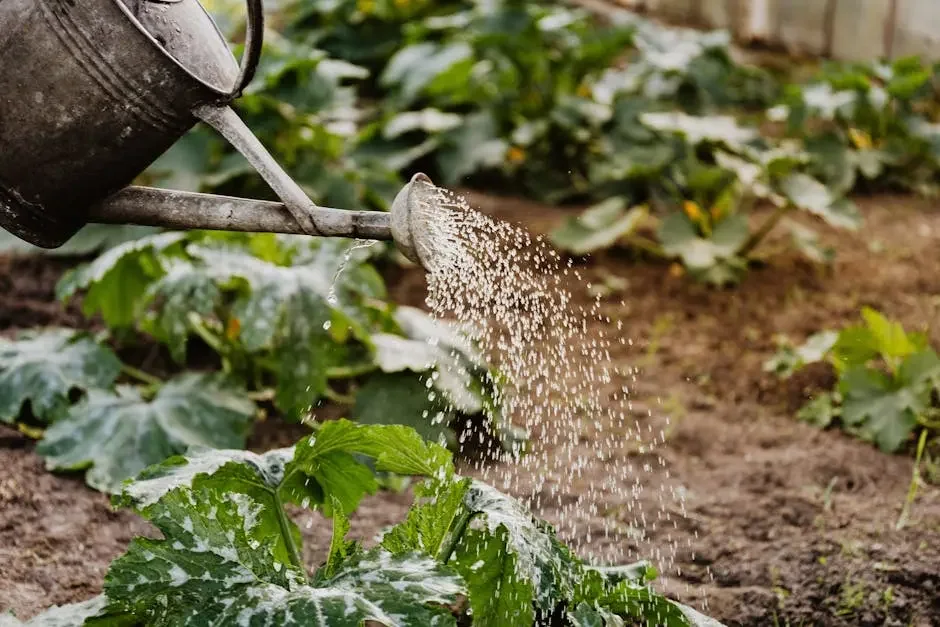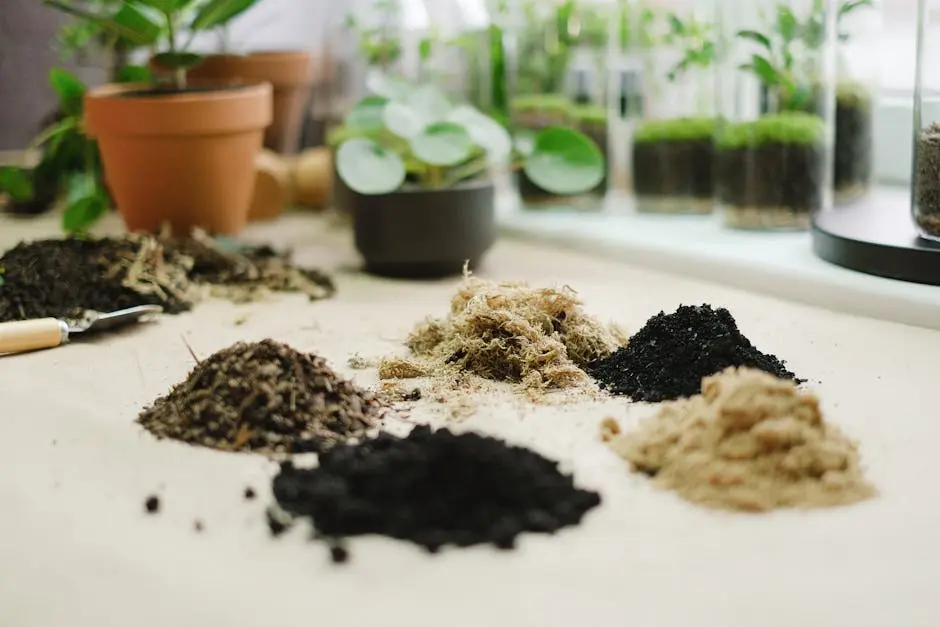1. Choose Local and Organic Seeds
Opt for seeds that are native to your area, as they adapt better to local conditions and support local ecosystems. Local seeds not only thrive better but also require fewer resources, making your gardening practice more sustainable. Furthermore, using organic seeds ensures that you're planting without harmful chemicals, paving the way for a healthier garden.
When you choose these seeds, you're not just planting; you're investing in biodiversity. By encouraging local flora, your garden acts as a refuge for various species, benefiting the environment in ways you might not have considered. It's like giving back to the land you've taken from, fostering an ecosystem that thrives on interdependence.
2. Embrace Companion Planting
Utilize the wisdom of companion planting to naturally deter pests and enhance the growth of your plants. This time-honored method involves pairing plants that support each other—think tomatoes and basil. Not only do they taste great together, but they also thrive together.
Companion planting can also help in maximizing space in your garden, allowing you to grow more in less area. By creating a harmonious relationship between species, you reduce the need for synthetic fertilizers and pesticides while boosting your garden's yield. Who wouldn't want increased bounty while keeping things eco-friendly?
Moreover, this approach supports soil health and enhances pollination. By diversifying your plant life, you invite a variety of beneficial insects and pollinators, creating a vibrant ecosystem that not only protects your crops but also adds color and life to your garden.
3. Utilize Organic Soil Amendments
Incorporate materials like compost and worm castings to enrich your soil without harmful chemicals. These organic soil amendments improve your soil structure, support microbial life, and provide essential nutrients to your plants. It's a win-win for both your garden and the environment!
Let’s not forget the beauty of homemade compost. Creating it is a wonderful way to recycle kitchen scraps, adding a personal touch to your gardening routine. As the compost breaks down, it becomes a formidable powerhouse for your plants, giving them the best chance to thrive and flourish.
Additionally, using natural amendments helps to lock in moisture, keeping your plants hydrated and happy without over-relying on water resources. This method not only serves your garden but also contributes to a larger, more sustainable gardening practice.
4. Practice Water Conservation
Implement rain barrels and drip irrigation to minimize water waste while keeping your garden hydrated. Capturing rainwater is a brilliant way to utilize a natural resource that often goes unnoticed, transforming your gardening approach into a more sustainable one.
Drip irrigation systems ensure that water goes directly to the roots, minimizing evaporation and runoff. This method not only conserves water but also enhances plant health by keeping the soil evenly moist. Your plants will thank you for it!
So, why not also consider mulching? Organic mulch not only helps to retain soil moisture but also fights against weed growth, thus reducing the competition for water and nutrients in your garden. It’s an effective multi-tasker that can change the way you approach watering in your garden.
5. Attract Beneficial Insects
Plant flowers that attract pollinators and pest-eating insects, reducing your reliance on chemical pesticides. Good examples include marigolds, which lure in ladybugs and hoverflies—nature's pest control agents. By welcoming these beneficial insects, you're taking a significant step toward a balanced ecosystem in your garden.
Creating a habitat for these helpers doesn’t require much effort, just thoughtful planning in your garden's layout. By integrating diverse flowering plants, you're able to draw in the right species that help keep the pest populations in check naturally.
It's also worth mentioning that beneficial insects contribute to pollination. This harmonious relationship enables your plants to produce fruits and seeds more efficiently, leading to a more bountiful harvest while sustaining a low-impact approach to gardening.
6. Create Natural Pest Barriers
Use natural materials like row covers to protect your plants from pests without harmful sprays. These covers not only shield your crops from pests but also provide a favorable microclimate, promoting healthy plant growth. The beauty of these barriers lies not just in their utility but also in their sustainability.
Moreover, consider interplanting with strong-scented herbs or spices that deter pests. The aromatic nature of herbs like mint or rosemary can act as a natural deterrent, keeping those annoying insects at bay while adding unique flavors to your meals. Isn’t it delightful how plants can support one another?
7. Implement Crop Rotation
Change your planting locations each season to improve soil health and reduce pest build-up. Crop rotation is a strategy that has been employed for centuries; it allows you to manage soil nutrients effectively while breaking the life cycles of pests and diseases.
By planting different crops in the same location, you balance nutrient demands on the soil and prevent depletion. This method not only enriches soil health but also protects your plants from diseases that arise from continuous monoculture.
In short, crop rotation should be a non-negotiable part of your sustainable gardening approach. It’s a proactive way to maintain the ecological balance in your garden while promoting long-term productivity.
8. Mulch for Moisture and Weed Control
Apply organic mulch to conserve moisture, regulate soil temperature, and suppress weeds naturally. This simple yet effective practice not only benefits your plants by retaining moisture but also enriches the soil as it breaks down, feeding your plants in the long run.
Beyond moisture conservation, mulch acts as a barrier against weed growth, reducing competition for nutrients. This means less time weeding and more time enjoying your flourishing garden. Plus, it adds an aesthetic appeal that can transform bare soil into a beautifully improved landscape.
9. Use Biodegradable Pots
Choose pots made from materials like coconut coir or biodegradable plastics for a greener start to your plants. These pots not only serve their purpose as containers but also seamlessly integrate into the ecosystem, breaking down naturally and enriching the soil as they decompose.
Switching to biodegradable options not only minimizes plastic waste in our landfills but also supports a circular economy in gardening. It's a small step that leads to a much larger positive impact, reinforcing the notion that every action counts in the quest for sustainability.
10. Compost Kitchen Scraps
Turn your food waste into nutrient-rich compost, reducing landfill waste and enriching your garden. Composting is not only eco-friendly but also a rewarding practice that transforms what would be waste into a valuable resource for your plants.
By mixing vegetable peels, eggshells, and even yard waste, you're cultivating a natural fertilizer that replenishes your soil's nutrients. This nurturing process not only benefits your plants but also supports a more sustainable lifestyle, aligning with eco-conscious values.
Composting also serves a dual purpose: it helps reduce greenhouse gas emissions, making your garden part of the global solution to environmental concerns. So, roll up your sleeves and start composting—your garden (and the planet) will thank you!
11. Opt for Natural Fertilizers
Select organic fertilizers like fish emulsion or seaweed extract to nourish your plants sustainably. These options provide essential nutrients without the harmful side effects associated with synthetic fertilizers, supporting long-term soil health and plant vitality.
Natural fertilizers work with your garden's ecosystem, promoting beneficial microbial life in the soil. This symbiotic relationship enhances nutrient uptake by your plants, leading to stronger, healthier specimens that are more resilient to pests and diseases.
12. Use Homemade Remedies
Create your own natural pest control solutions using common household items like soap or vinegar. This step not only cuts down on costs but also aligns perfectly with a sustainable lifestyle. These environmentally friendly concoctions can effectively deter pests without posing a threat to beneficial insects.
Taking the time to mix these homemade solutions can be a fun and rewarding experience. You’ll feel a sense of accomplishment every time you spray your plants with a remedy you crafted with your own hands, knowing it’s safe for both your plants and the environment.
13. Promote Biodiversity
Grow a variety of plants to create a balanced ecosystem and attract a diverse range of wildlife. Biodiversity acts as nature's defense against pests and diseases, creating a more resilient garden. By introducing different species, you aid in creating a self-sustaining environment.
Consider incorporating native plants into your garden design. Not only do they typically require less water and care, but they also provide habitats for various creatures. A thriving ecosystem benefits both you and the environment, enhancing your gardening experience.
14. Harvest Rainwater
Set up a rainwater collection system to irrigate your garden sustainably and reduce dependence on tap water. Rain barrels collect natural water, allowing you to utilize this free resource efficiently. This not only decreases your water bills but also lessens your environmental footprint.
By using rainwater, you also provide soft, chemical-free water for your plants, which is often better than tap water. This practice reflects a conscious effort toward environmental sustainability, making it a desirable addition to any eco-friendly garden.
15. Educate and Inspire Others
Share your gardening journey and eco-friendly practices with friends and neighbors to inspire sustainability in your community. Whether it’s through workshops, garden tours, or social media, your efforts can motivate others to embrace eco-friendly gardening practices.
Communicating the importance of organic gardening and sustainable practices can ripple outwards. The more people you inspire, the larger the collective impact will be, creating a community motivated by shared values of health, sustainability, and stewardship of the earth.










